Managing Drive Failures with AN!CDB
|
Alteeve Wiki :: How To :: Managing Drive Failures with AN!CDB |
| Note: At this time, only LSI-based controllers are supported. Please see this section of the AN!Cluster Tutorial 2 for required node configuration. |
The AN!CDB dashboard supports basic drive management for nodes using LSI-based RAID controllers. This covers most all Fujitsu servers.
This guide will show you how to handle a few common storage management tasks easily and quickly.
Starting The Storage Manager
From the main AN!CDB page, under the "Cluster Nodes - Control window, click on the name of the node you wish to manage.
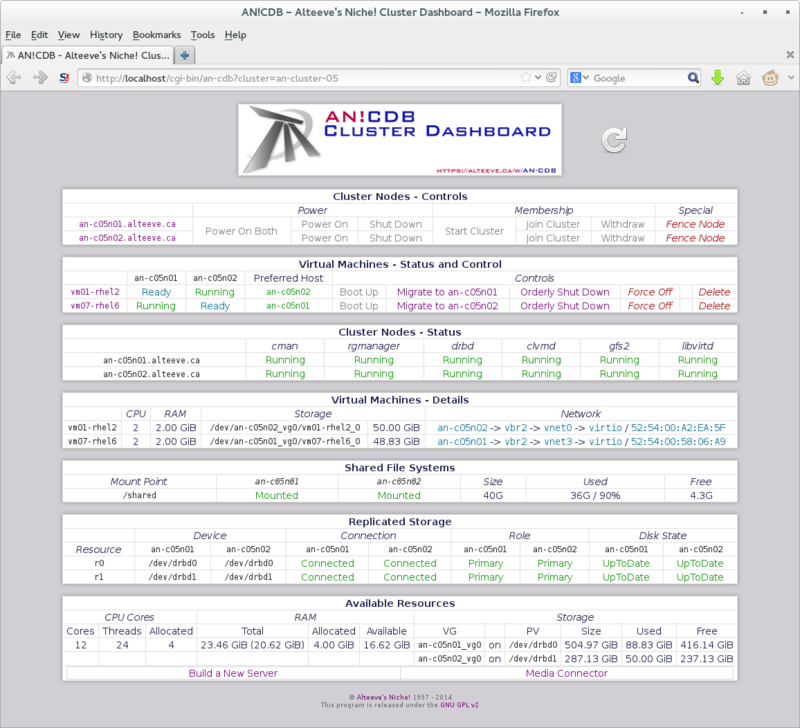
This will open a new tab (or window) showing the current configuration and state of the node's storage.
Storage Display Window
The storage display window shows your storage controller(s), their auxiliary power supply for write-back caching if installed, the logical disk(s) and each logical disk's constituent drives.
The auxiliary power and logical disks will be slightly indented under their parent controller.
The physical disks associates with a given logical disk are further indented, to show their association.
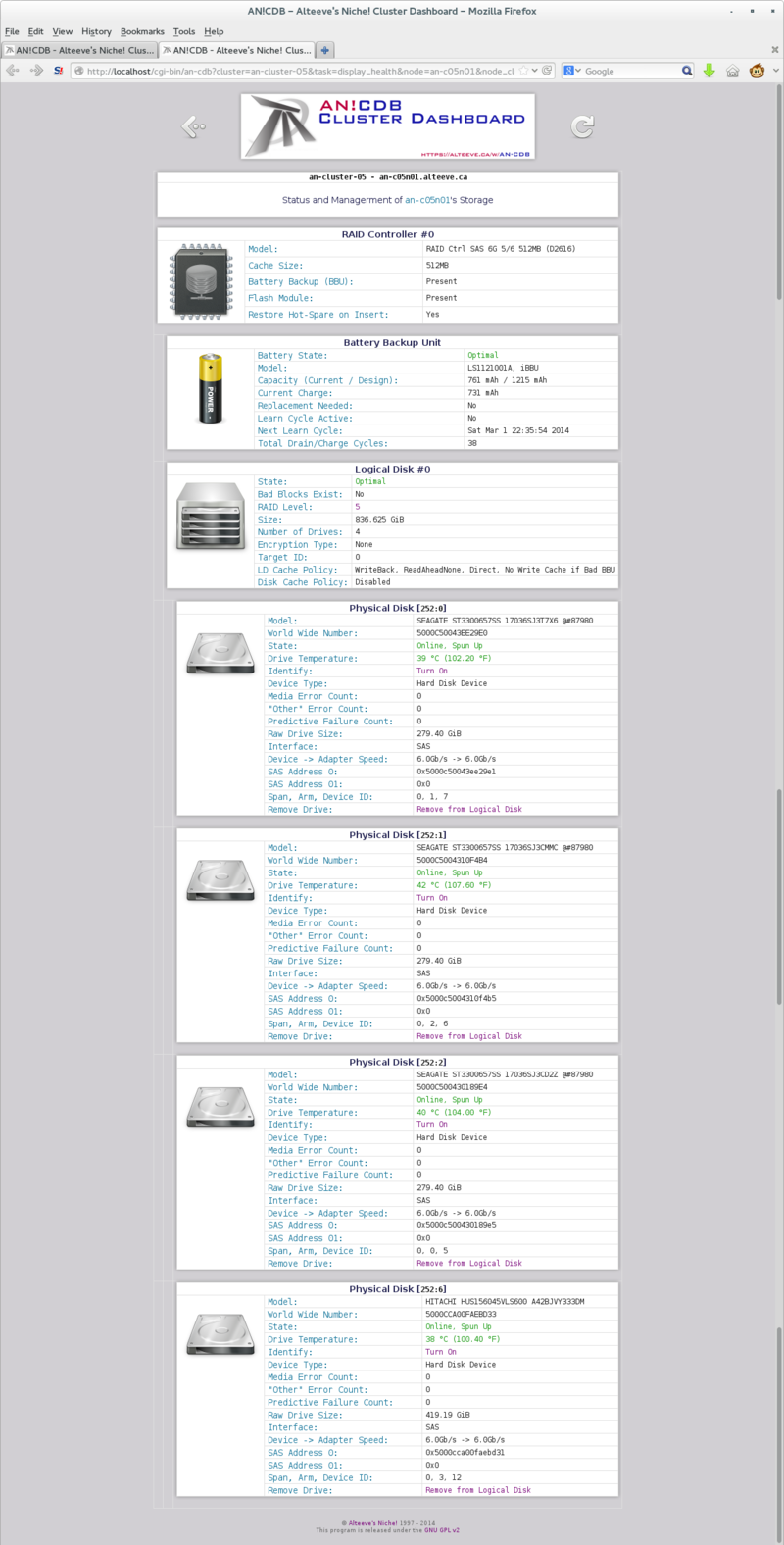
In this example, we have only one RAID controller, it has an auxiliary power pack and a single logical volume has been created.
The Logical volume is a RAID level 5 array with four physical disks.
Controlling the Physical Disk Identification ID Light
The first task we will explore is using identification lights to match a physical disk listing with a physical drive in a node.
If a drive fails completely, it's fault light will light up, making the failed drive easy to find. However, the AN!CDB alert system can notify us of pending failures. In these cases, the drive's fault light will not illuminate. So it becomes critical to identify the failing drive. Removing the wrong drive, when another drive is unhealthy, may well leave your node non-operational.
That's no fun.
Each physical drive will have a buttons labelled either Turn On or Turn Off, depending on the current state of the identification LED.
Illumination a Drive's ID Light
Let's illuminate!
We will identify the drive with the somewhat-cryptic name '252:0'.
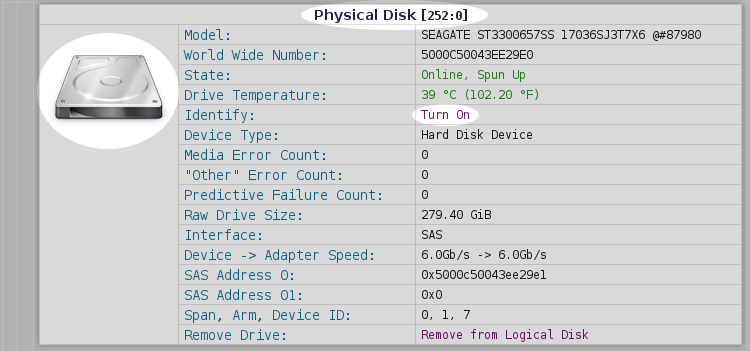
The storage page will reload, indicating whether the command succeeded or not.
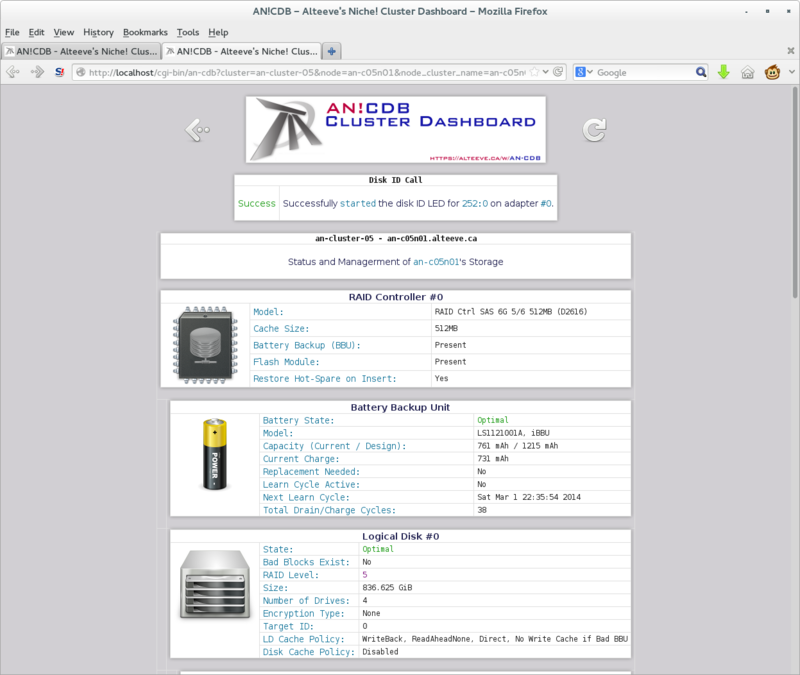
If you now look at the front of your node, you should see one of the drives lit up.
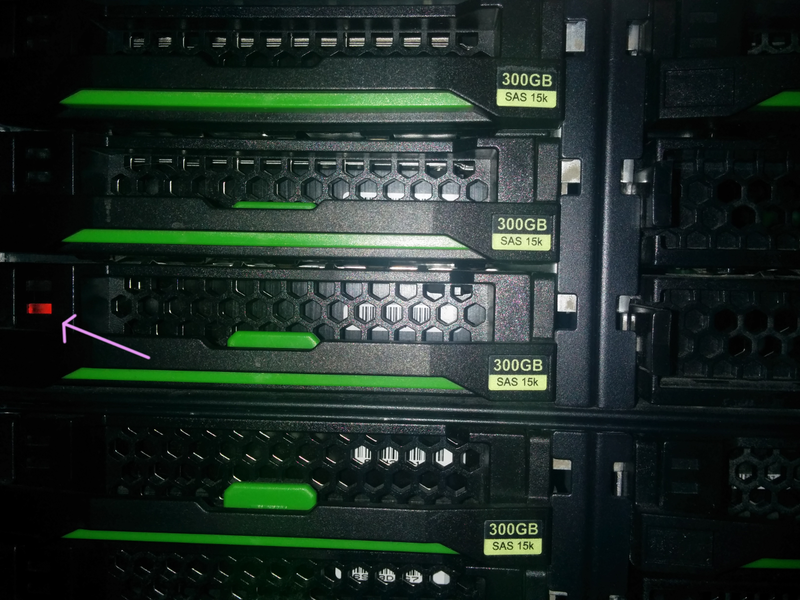
Most excellent.
Shutting off a Drive's ID Light
To turn the ID light off, simply click on the drive's Turn Off button.
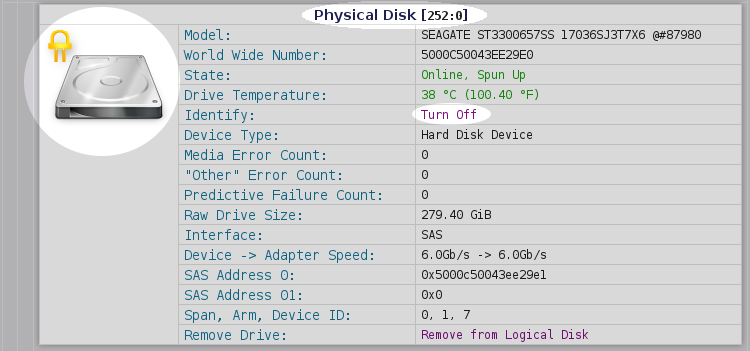
As before, the success or failure will be reported.
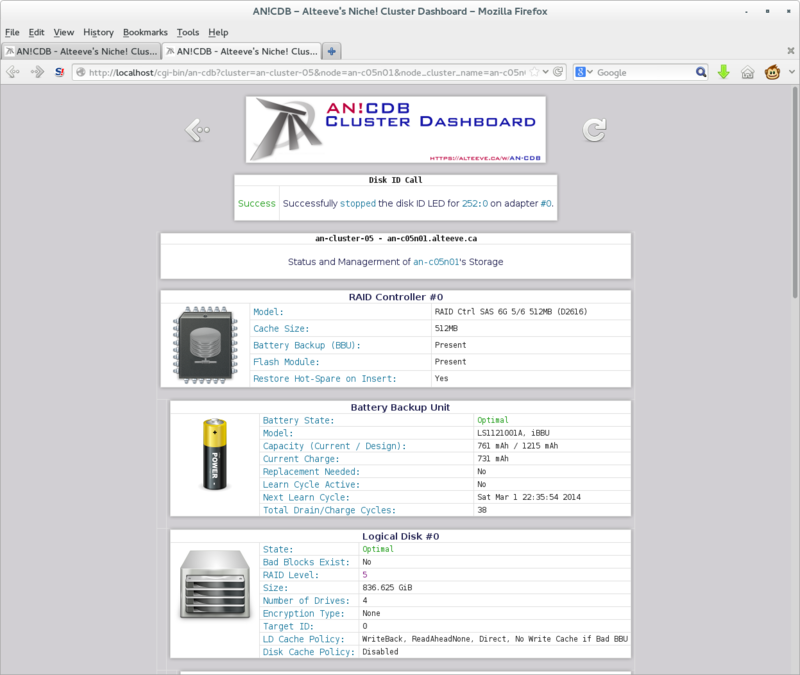
Refreshing The Storage Page
After issuing a command to the storage manager, please do not use your browser's "refresh" function. It is always better to click on the reload icon.
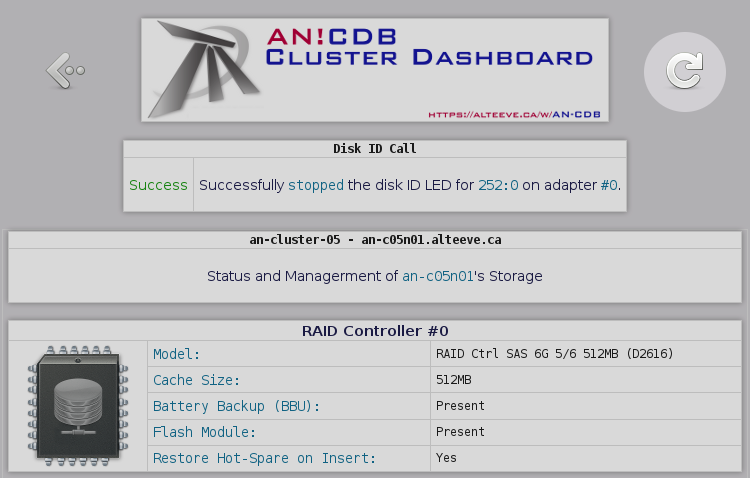
This will reload the page with the most up to date state of the storage in your node.
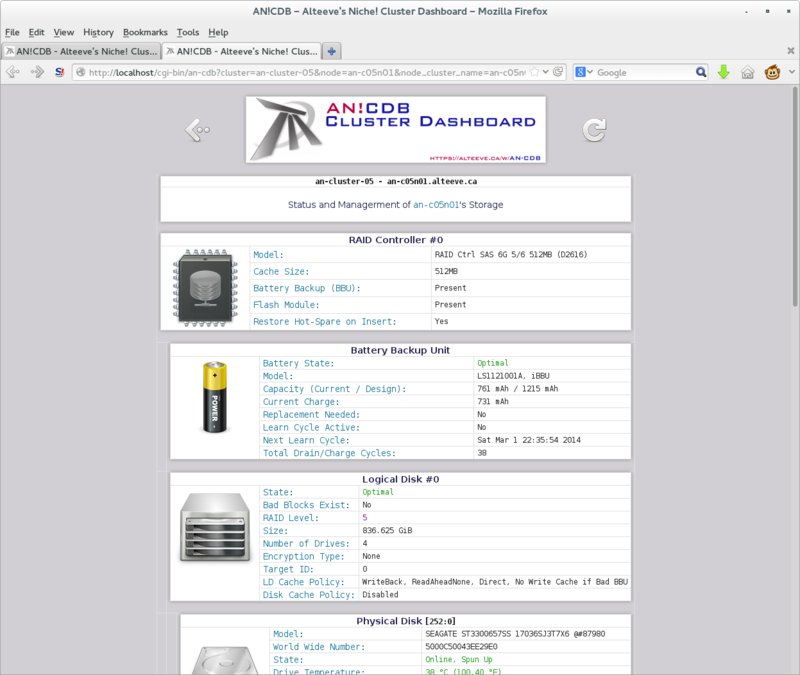
Failure and Recovery
There are many ways for hard drives to fail.
In this section, we're going to sort-of simulate four failures;
- Drive vanishes entirely
- Drive is failed but still online
- Good drive was ejected by accident, recovering
- Drive has not yet failed, but may soon
The first three are going to be sort of mashed together. We'll simply eject the drive while it's running, causing it to disappear and for the array to degrade. If this happened in real life, you would simply eject it and insert a new drive.
For the second case, we'll re-insert the ejected drive. The drive will be listed as failed ("Unconfigured(bad)"). We'll tell the controller to "spin down" the drive, making it safe to remove. If the real world, we would then eject it and install a new drive.
In the third case, we will again eject the drive, and then re-insert it. In this case, we won't spin down the drive, but instead mark it as healthy again.
Lastly, we will discuss predictive failure. In these cases, the drive has not failed yet, but confidence in the drive has been lost, so pre-failure replacement will be done.
Drive Vanishes Entirely
Drive is Failed but Still Online
Recovering from Accidental Ejection of Good Drive
Pre-Failure Drive Replacement
Managing Hot-Spares
In this final section, we will add a "Hot-Spare" drive to our node. A "Hot-Spare" is an unused drive that the control knows can be used to immediately replace a failed drive.
This is a popular option for people who want to return to a fully redundant state as soon after a failure as possible.
We will Configure a Hot-Spare, show how it replaces a failed drive, and show how to unmark a drive as a hot-spare, in case the Hot-Spare itself goes bad.
Creating a Hot-Spare
Example of a Hot-Spare Working
Replacing a Failing Hot-Spare
| Any questions, feedback, advice, complaints or meanderings are welcome. | |||
| Alteeve's Niche! | Alteeve Enterprise Support | Community Support | |
| © 2025 Alteeve. Intelligent Availability® is a registered trademark of Alteeve's Niche! Inc. 1997-2025 | |||
| legal stuff: All info is provided "As-Is". Do not use anything here unless you are willing and able to take responsibility for your own actions. | |||

